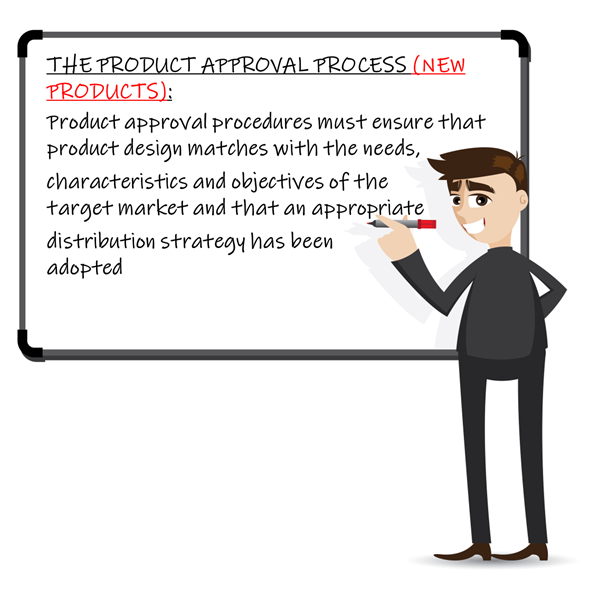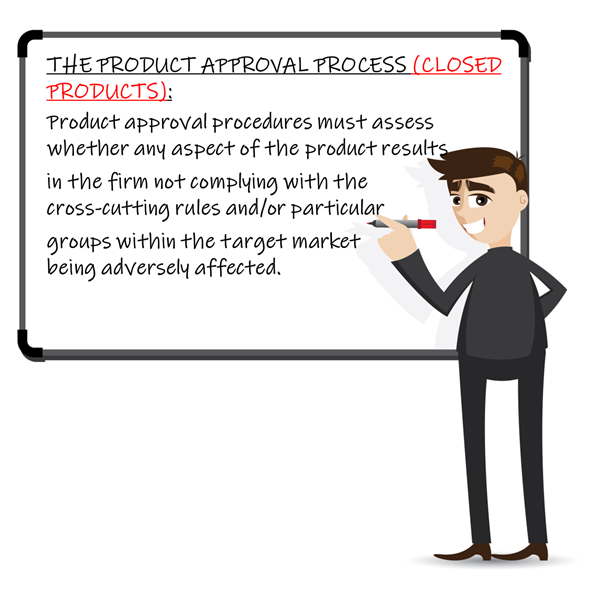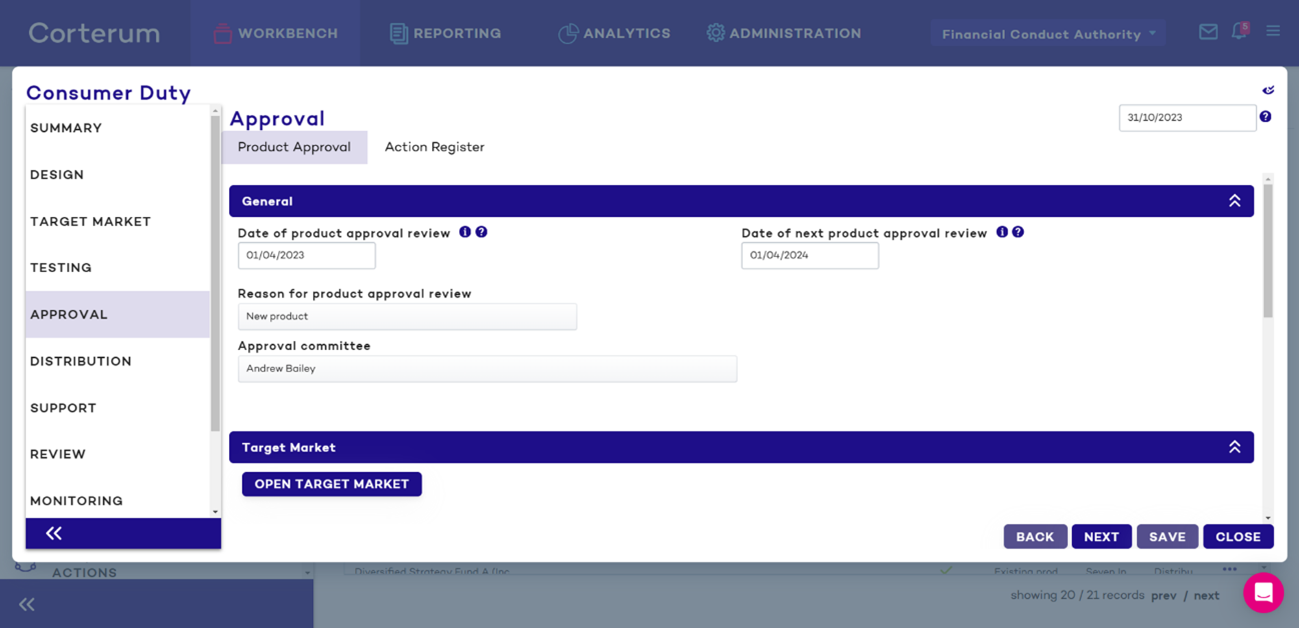Approval of open products
With respect to any new product manufactured on or after 31 July 2023, or any existing product, a product manufacturer must maintain, operate and review a process for the approval (or any significant adaptation to) a product in each case before it is marketed or distributed to retail customers.[1] Approval procedures must:
- specify the target market for the product at a sufficiently granular level, taking into account the characteristics, risk profile, complexity and nature of the product,
- take account of any particular additional or different needs, characteristics and objectives that might be relevant for retail customers in the target market with characteristics of vulnerability,
- ensure that all relevant risks to the target market, including any relevant risks to retail customers with characteristics of vulnerability, are assessed,
- ensure that the design of the product: (i) meets the needs, characteristics and objectives of the target market; (ii) does not adversely affect groups of retail customers in the target market, including groups of retail customers with characteristics of vulnerability; and (iii) avoids causing foreseeable harm in the target market,
- ensure that the intended distribution strategy is appropriate for the target market, and
- require the manufacturer to take all reasonable steps to ensure that the product is distributed to the identified target market.
Product approval processes should be regularly reviewed (and amended where appropriate to ensure that they remain valid and up to date.[2]
In terms of product approval, product manufacturers will be expected to be able to evidence the steps that they have taken to match product design with the needs, characteristics and objectives of the target market.[3]

Approval of closed products
A manufacturer of a closed product must maintain, operate and review a process to assess and regularly review whether:
- any aspect of the product results in the firm not complying with the cross-cutting obligations in relation to existing retail customers,[4] and
- the product affects groups of retail customers in different ways and in particular whether any retail customers in the target market with characteristics of vulnerability are adversely affected by any aspect of the product.[5]


Next time
Next time, we’ll be turning our attention to look at compliance with the Consumer Duty within the “Product Distribution” stage, so stay tuned!
[1] PROD 2A.3.2R; FG22/5, 6.13
[2] FG22/5, 6.16
[3] FG22/5, 6.51
[4] PROD 2A.3.5R(1)
[5] PRIN 2A.3.6R

